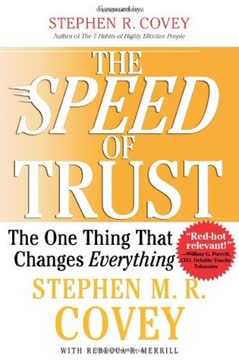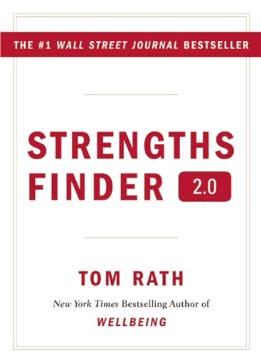Key Takeaways
1. Recognize and navigate crucial conversations to improve relationships and outcomes
"When stakes are high, opinions vary, and emotions start to run strong, casual conversations become crucial."
Crucial conversations are discussions with high stakes, differing opinions, and strong emotions. They can significantly impact our personal and professional lives. Examples include discussing relationship issues, giving feedback to a colleague, or addressing sensitive topics with family members. Most people either avoid these conversations or handle them poorly, leading to negative outcomes.
By mastering crucial conversations, we can:
- Improve relationships
- Enhance career prospects
- Boost personal health
- Revitalize communities
The key is to recognize when a conversation becomes crucial and apply specific skills to navigate it effectively. This involves staying in dialogue, creating safety, and encouraging the free flow of information.
2. Start with heart: Focus on what you truly want from the conversation
"The best at dialogue are both totally frank and completely respectful."
Start with heart means focusing on your true objectives for the conversation, rather than getting caught up in winning arguments or proving points. This approach helps maintain respect and openness, even in challenging discussions.
To start with heart:
- Ask yourself: "What do I really want for myself, others, and the relationship?"
- Avoid Sucker's Choices (false either/or dilemmas)
- Stay focused on dialogue, not pushing for a specific outcome
By clarifying your genuine intentions, you're more likely to approach the conversation constructively and find mutually beneficial solutions.
3. Learn to look: Identify when safety is at risk in a dialogue
"The first condition of safety is Mutual Purpose."
Learn to look involves recognizing signs that a conversation is becoming unsafe. This skill is crucial because when people feel unsafe, they often resort to silence (withholding information) or violence (trying to force their views on others).
Key indicators to watch for:
- Physical signs: Flushing, clenching fists
- Emotional signs: Feeling hurt, angry, or scared
- Behavioral signs: Raising voice, interrupting, withdrawing
By identifying these signs early, you can take steps to restore safety and keep the dialogue productive. This might involve clarifying intentions, acknowledging others' concerns, or finding a shared purpose.
4. Make it safe: Create an environment where open dialogue can thrive
"Dialogue is the free flow of meaning between two or more people."
Making it safe is about creating conditions where people feel comfortable sharing their honest thoughts and feelings. This involves establishing mutual purpose (agreeing on a shared goal) and mutual respect (valuing each other as human beings).
Techniques for making it safe:
- Apologize when appropriate
- Contrast to clarify intentions (what you don't mean vs. what you do mean)
- Create a mutual purpose if one doesn't exist
When people feel safe, they're more likely to engage in open, honest dialogue, leading to better understanding and outcomes.
5. Master your stories: Control your emotions by examining your thoughts
"Emotions don't settle upon you like a fog. They are not foisted upon you by others. You and only you create your emotions."
Mastering your stories involves recognizing that our emotions stem from the stories we tell ourselves about events, not the events themselves. By examining and changing these stories, we can better control our emotional responses.
Steps to master your stories:
- Notice your behavior (are you in silence or violence?)
- Get in touch with your feelings
- Analyze your stories
- Separate fact from story
- Watch for "Victim," "Villain," and "Helpless" stories
By challenging our initial interpretations and considering alternative explanations, we can approach crucial conversations more rationally and constructively.
6. STATE your path: Express your views in a way that encourages mutual understanding
"The best at dialogue speak their minds completely and do it in a way that makes it safe for others to hear what they have to say and respond to it as well."
STATE is an acronym that provides a framework for expressing your views effectively:
- Share your facts
- Tell your story
- Ask for others' paths
- Talk tentatively
- Encourage testing
This approach helps you present your perspective clearly while remaining open to others' views. By sharing facts first and acknowledging that your interpretation is just a story, you invite others to share their perspectives, leading to a more balanced dialogue.
7. Explore others' paths: Listen actively and understand different perspectives
"The best at dialogue do something completely different. They are both totally frank and completely respectful."
Exploring others' paths involves actively seeking to understand others' perspectives, especially when they differ from your own. This skill is crucial for building mutual understanding and finding solutions that work for everyone.
Techniques for exploring others' paths:
- Ask to get things rolling
- Mirror to confirm feelings
- Paraphrase to acknowledge the story
- Prime when you're getting nowhere
By genuinely seeking to understand others, you demonstrate respect and create an environment where creative problem-solving can flourish.
8. Move to action: Transform dialogue into results through clear decisions and follow-up
"To get a good idea adopted, you need to avoid two extremes: ( 1 ) Avoiding at all costs and (2) Diving in headfirst."
Moving to action involves turning the insights gained from dialogue into concrete results. This requires clarity about decision-making processes and follow-up actions.
Key steps for moving to action:
- Decide how to decide (Command, Consult, Vote, or Consensus)
- Document decisions and assignments
- Follow up on commitments
By clearly defining next steps and responsibilities, you ensure that the valuable insights gained from crucial conversations translate into meaningful change and improved outcomes.
Last updated:
FAQ
What's "Crucial Conversations" about?
- Core Focus: "Crucial Conversations" by Kerry Patterson, Joseph Grenny, Ron McMillan, and Al Switzler is about mastering the skills needed to handle high-stakes, emotional, and controversial conversations effectively.
- Key Concept: The book introduces the concept of dialogue as the free flow of meaning between two or more people, which is essential for making better decisions and achieving desired results.
- Practical Tools: It provides practical tools and techniques to help individuals stay in dialogue, even when emotions run high, and to ensure that all relevant information is shared openly.
- Real-Life Applications: The authors use real-life examples and research to illustrate how these skills can be applied in various settings, from personal relationships to professional environments.
Why should I read "Crucial Conversations"?
- Improve Communication: The book offers valuable insights into improving communication skills, which are crucial for personal and professional success.
- Handle Difficult Situations: It equips readers with the tools to handle difficult conversations that could otherwise lead to misunderstandings or conflicts.
- Enhance Relationships: By learning to communicate effectively, readers can strengthen their relationships and build trust with others.
- Achieve Better Outcomes: The skills taught in the book can lead to better decision-making and more positive outcomes in both personal and organizational contexts.
What are the key takeaways of "Crucial Conversations"?
- Start with Heart: Focus on what you really want for yourself, others, and the relationship, and avoid making Sucker's Choices.
- Learn to Look: Be aware of when a conversation becomes crucial and watch for signs of safety problems, such as silence or violence.
- Make It Safe: Use techniques like apologizing, contrasting, and finding mutual purpose to restore safety in a conversation.
- Master My Stories: Recognize and control the stories you tell yourself to manage your emotions and stay in dialogue.
How does "Crucial Conversations" define dialogue?
- Free Flow of Meaning: Dialogue is defined as the free flow of meaning between two or more people, which is essential for effective communication.
- Shared Pool of Meaning: The goal of dialogue is to create a shared pool of meaning, where all relevant information is openly shared and understood.
- Safety and Respect: Dialogue requires a safe environment where individuals feel respected and are willing to share their thoughts and feelings.
- Foundation for Success: Effective dialogue is the foundation for making better decisions and achieving successful outcomes in both personal and professional settings.
What is the "Start with Heart" principle in "Crucial Conversations"?
- Focus on Goals: The principle emphasizes focusing on what you really want for yourself, others, and the relationship during a crucial conversation.
- Avoid Sucker's Choices: It advises against making Sucker's Choices, which are false dichotomies that force you to choose between two undesirable options.
- Self-Reflection: Encourages self-reflection to understand your motives and ensure they align with your true goals.
- Maintain Dialogue: By starting with heart, you can maintain dialogue and avoid getting sidetracked by emotions or defensiveness.
How can I "Make It Safe" during a crucial conversation?
- Apologize When Necessary: Offer a sincere apology if you've violated respect or trust, to help restore safety.
- Use Contrasting: Clarify what you don't mean and what you do mean to prevent misunderstandings and reduce defensiveness.
- Find Mutual Purpose: Work to identify a shared goal or interest that both parties can agree on, to create a foundation for dialogue.
- Build Mutual Respect: Ensure that the other person feels respected and valued, which is essential for maintaining a safe environment for dialogue.
What are "Sucker's Choices" and how do they affect conversations?
- False Dichotomies: Sucker's Choices are either/or choices that suggest you must choose between two undesirable options, often leading to poor decision-making.
- Limit Dialogue: They limit dialogue by making it seem like there are no other options, which can lead to silence or violence.
- Avoidance Strategy: People use Sucker's Choices to justify avoiding difficult conversations or to rationalize aggressive behavior.
- Finding the "And": The book encourages finding the "And" by looking for creative solutions that satisfy both sides, rather than settling for a Sucker's Choice.
How does "Crucial Conversations" suggest handling strong emotions?
- Master My Stories: Recognize that your emotions are driven by the stories you tell yourself, and learn to control these stories to manage your emotions.
- Retrace Your Path: Analyze your Path to Action by identifying your feelings, the story behind them, and the facts that support the story.
- Tell the Rest of the Story: Challenge your initial story by considering other possible explanations and focusing on what you really want.
- Stay in Dialogue: By managing your emotions, you can stay in dialogue and avoid reacting with silence or violence.
What role does "Mutual Purpose" play in crucial conversations?
- Foundation for Dialogue: Mutual Purpose is the entry condition for dialogue, ensuring that both parties are working toward a common goal.
- Builds Trust: It helps build trust and respect, as both parties feel that their interests and values are being considered.
- Restores Safety: When safety is at risk, finding a Mutual Purpose can help restore it and keep the conversation on track.
- Encourages Collaboration: By focusing on a shared goal, both parties are more likely to collaborate and find a solution that satisfies everyone.
How can I "Explore Others' Paths" in a conversation?
- Ask for Their Views: Invite others to share their thoughts and feelings by asking open-ended questions and showing genuine interest.
- Mirror Their Emotions: Reflect back the emotions you observe to show empathy and encourage them to open up.
- Paraphrase Their Story: Restate what you've heard to confirm your understanding and demonstrate that you're listening.
- Prime When Necessary: If others are reluctant to share, offer a guess about what they might be thinking or feeling to encourage them to speak.
What are some of the best quotes from "Crucial Conversations" and what do they mean?
- "Start with Heart": This quote emphasizes the importance of focusing on your true goals and maintaining dialogue, even when emotions run high.
- "When it's safe, you can say anything": Highlights the importance of creating a safe environment for open and honest communication.
- "The Pool of Shared Meaning is the birthplace of synergy": Suggests that when all relevant information is shared, it leads to better decision-making and collaboration.
- "People who are skilled at dialogue do their best to make it safe for everyone to add their meaning to the shared pool": Encourages creating an environment where everyone feels comfortable sharing their thoughts and ideas.
How can I apply the skills from "Crucial Conversations" in real life?
- Practice Regularly: Use everyday situations to practice the skills, starting with less risky conversations and gradually moving to more challenging ones.
- Seek Feedback: Discuss your progress with a trusted friend or colleague and ask for feedback on your communication skills.
- Reflect on Experiences: After each crucial conversation, reflect on what went well and what could be improved, and adjust your approach accordingly.
- Stay Committed: Continuously work on enhancing your dialogue skills, as they are essential for personal and professional success.
Review Summary
Crucial Conversations receives high praise for its practical insights on effective communication. Readers appreciate its tools for handling emotionally charged discussions, emphasizing safety and mutual purpose. Many found it transformative for personal and professional interactions. Some note the book's style can be infomercial-like, but most agree the content is invaluable. Reviewers highlight concepts like "making it safe" and focusing on desired outcomes. Several mention rereading for better application. Overall, it's widely recommended for improving communication skills, though a few find it basic or overwhelming.
Similar Books









Download PDF
Download EPUB
.epub digital book format is ideal for reading ebooks on phones, tablets, and e-readers.





